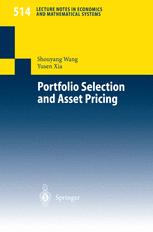

Most ebook files are in PDF format, so you can easily read them using various software such as Foxit Reader or directly on the Google Chrome browser.
Some ebook files are released by publishers in other formats such as .awz, .mobi, .epub, .fb2, etc. You may need to install specific software to read these formats on mobile/PC, such as Calibre.
Please read the tutorial at this link: https://ebookbell.com/faq
We offer FREE conversion to the popular formats you request; however, this may take some time. Therefore, right after payment, please email us, and we will try to provide the service as quickly as possible.
For some exceptional file formats or broken links (if any), please refrain from opening any disputes. Instead, email us first, and we will try to assist within a maximum of 6 hours.
EbookBell Team

5.0
88 reviewsIn our daily life, almost every family owns a portfolio of assets. This portfolio could contain real assets such as a car, or a house, as well as financial assets such as stocks, bonds or futures. Portfolio theory deals with how to form a satisfied portfolio among an enormous number of assets. Originally proposed by H. Markowtiz in 1952, the mean-variance methodology for portfolio optimization has been central to the research activities in this area and has served as a basis for the development of modem financial theory during the past four decades. Follow-on work with this approach has born much fruit for this field of study. Among all those research fruits, the most important is the capital asset pricing model (CAPM) proposed by Sharpe in 1964. This model greatly simplifies the input for portfolio selection and makes the mean-variance methodology into a practical application. Consequently, lots of models were proposed to price the capital assets. In this book, some of the most important progresses in portfolio theory are surveyed and a few new models for portfolio selection are presented. Models for asset pricing are illustrated and the empirical tests of CAPM for China's stock markets are made. The first chapter surveys ideas and principles of modeling the investment decision process of economic agents. It starts with the Markowitz criteria of formulating return and risk as mean and variance and then looks into other related criteria which are based on probability assumptions on future prices of securities.